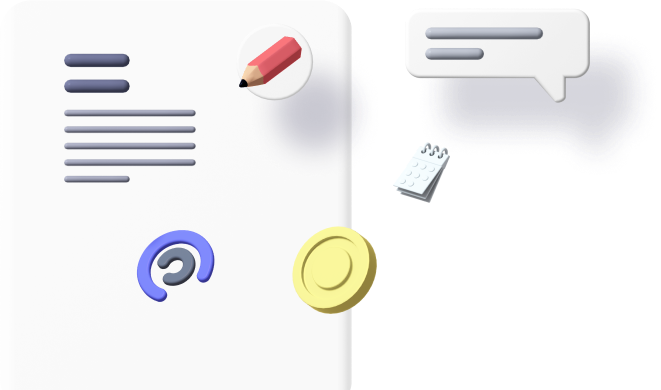Building a successful website requires careful planning, proper coding practices, and attention to user experience. However, many developers make common web development mistakes that negatively impact a site’s performance, usability, and search engine ranking. These mistakes can result in slow loading times, security vulnerabilities, and poor user engagement.
In this article, we will explore the most common web development mistakes that can ruin a website and how to avoid them.
1. Slow Website Performance
A slow website is one of the main reasons users leave before engaging with the content. Studies show that most users expect a site to load within three seconds. If it takes longer, they are likely to leave and never return.
Common Causes of Slow Websites:
- Large and unoptimized images
- Excessive use of JavaScript and CSS files
- Poor server performance or shared hosting
- Lack of caching and content delivery network (CDN)
- Too many third-party scripts
How to Fix It:
- Compress and optimize images using modern formats like WebP
- Minify CSS and JavaScript files
- Enable caching and use a CDN to distribute content globally
- Choose a reliable hosting provider with good server response times
- Remove unnecessary third-party scripts and plugins
2. Lack of Mobile Responsiveness
With more than half of all web traffic coming from mobile devices, websites that do not adapt to different screen sizes will frustrate users and rank lower on search engines.
Common Mobile Optimization Mistakes:
- Fixed-width layouts that do not adjust to smaller screens
- Text and buttons that are too small to interact with
- Images that do not scale properly
- Navigation menus that are difficult to use on touchscreens
How to Fix It:
- Use a responsive web design approach with CSS media queries
- Implement a mobile-first design strategy
- Test the website on various devices and screen sizes
- Use a framework like Bootstrap or Tailwind CSS for better responsiveness
3. Poor SEO Optimization
Search engine optimization (SEO) is essential for driving organic traffic to a website. Ignoring SEO best practices is one of the common web development mistakes that can result in low search rankings, making it difficult for users to find your site.
Common SEO Mistakes:
- Missing or duplicate meta titles and descriptions
- Poor use of heading tags (H1, H2, H3)
- Not optimizing images with alt text
- Broken links and 404 errors
- Slow page speed affecting rankings
How to Fix It:
- Write unique and compelling meta titles and descriptions for each page
- Use proper heading structure to improve readability and SEO
- Add alt text to all images for accessibility and search engine indexing
- Regularly check for and fix broken links
- Improve page speed through caching, compression, and optimized code
4. Complicated Navigation and Poor User Experience
A confusing navigation structure makes it difficult for visitors to find what they need, leading to high bounce rates and lost conversions.
Common Navigation and UX Mistakes:
- Overly complex menus with too many options
- Lack of a search function
- Inconsistent design elements across pages
- Too many pop-ups disrupting the user experience
How to Fix It:
- Keep navigation simple and intuitive
- Provide a clear hierarchy of pages
- Add a search bar for easy content discovery
- Minimize the use of intrusive pop-ups
5. Ignoring Security Best Practices
Security is a critical aspect of web development, and failing to implement proper security measures can make a website vulnerable to attacks, data breaches, and malware infections.
Common Security Mistakes:
- Not using HTTPS (SSL Certificate)
- Weak passwords and lack of multi-factor authentication
- Outdated software, themes, or plugins
- No regular backups of the website data
How to Fix It:
- Install an SSL certificate to encrypt data and protect user information
- Use strong passwords and enable multi-factor authentication for logins
- Regularly update the CMS, plugins, and themes to fix security vulnerabilities
- Implement automated backups to restore data in case of an attack
6. Using Unoptimized Images
Images play a crucial role in web design, but if they are not properly optimized, they can slow down the website and impact user experience.
Common Image Optimization Mistakes:
- Uploading large images without compression
- Using outdated image formats like BMP and TIFF
- Not defining image dimensions in the HTML or CSS
- Loading all images at once instead of lazy loading
How to Fix It:
- Use compressed image formats like WebP and JPEG
- Set proper width and height attributes to prevent layout shifts
- Enable lazy loading so images only load when needed
7. Poor Coding Practices
Messy and unstructured code makes it harder to maintain and scale a website, increasing the likelihood of errors and performance issues.
Common Coding Mistakes:
- Using inline CSS instead of external stylesheets
- Writing unorganized and repetitive code
- Lack of proper comments and documentation
- Not validating code for errors
How to Fix It:
- Use external stylesheets for better performance and maintainability
- Follow clean coding standards and best practices
- Add comments and documentation for better code readability
- Validate code using tools like W3C Validator to check for errors
8. Ignoring Website Accessibility
Web accessibility ensures that people with disabilities can use a website effectively. Ignoring accessibility features is one of the most common web development mistakes and can limit the audience or even lead to legal issues.
Common Accessibility Mistakes:
- Missing alt text for images
- Poor contrast between text and background
- Forms without proper labels for screen readers
- Website navigation that does not support keyboard-only users
How to Fix It:
- Use descriptive alt text for all images
- Ensure sufficient color contrast for readability
- Add proper labels and descriptions to form elements
- Enable keyboard navigation and test for accessibility compliance
9. Lack of Regular Maintenance
Many developers build a website and forget to maintain it. A website needs ongoing updates to stay secure, functional, and relevant.
Common Maintenance Mistakes:
- Not updating CMS, themes, and plugins
- Ignoring broken links and outdated content
- No performance monitoring or error tracking
How to Fix It:
- Schedule regular updates and security patches
- Use tools like Google Analytics to monitor performance
- Perform periodic audits to fix broken links and outdated information
Conclusion
Avoiding these common web development mistakes will help create a website that is fast, secure, and user-friendly. A well-optimized site improves user experience, ranks higher on search engines, and drives more traffic.
Key Takeaways:
- Optimize website speed by compressing images and minifying code
- Ensure mobile responsiveness with a flexible design
- Follow SEO best practices for better search rankings
- Improve navigation and user experience for better engagement
- Implement security measures like HTTPS and regular backups
- Use clean and efficient coding practices
- Ensure accessibility to reach a broader audience
- Perform regular maintenance and updates
By following these best practices, you can build a website that performs well, attracts visitors, and provides a seamless experience across all devices.



